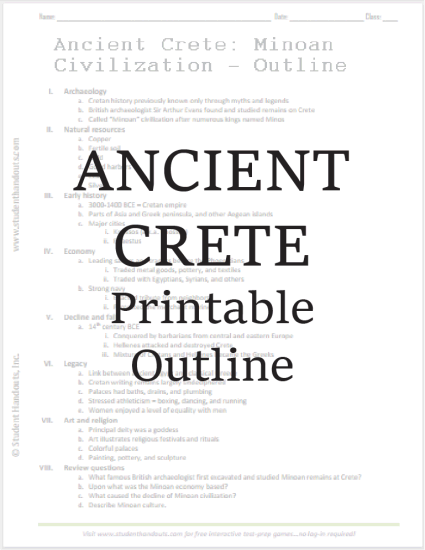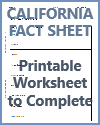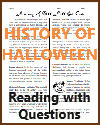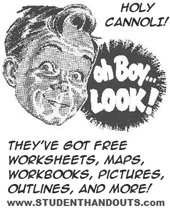| Ancient Crete: Minoan Civilization Printable PDF Outline |
|---|
| www.studenthandouts.com ↣ World History ↣ Ancient Greece ↣ Ancient Greece Outlines & PPTs |
|
Archaeology a. Cretan history previously known only through myths and legends b. British archaeologist Sir Arthur Evans found and studied remains on Crete c. Called "Minoan" civilization after numerous kings named Minos Natural resources  a. Copper
a. Copperb. Fertile soil c. Gold d. Good harbors e. Lead f. Silver Early history a. 3000-1400 B.C.E. – Cretan empire b. Parts of Asia and Greek peninsula, and other Aegean islands c. Major cities i. Knossos (a.k.a. Cnossus) ii. Phaestus Economy a. Leading sailors and traders before the Phoenicians i. Traded metal goods, pottery, and textiles ii. Traded with Egyptians, Syrians, and others b. Strong navy i. Exacted tribute from neighbors ii. Protected the merchant marine Decline and fall a. 14th century B.C.E. i. Conquered by barbarians from central and eastern Europe ii. Hellenes attacked and destroyed Crete iii. Mixture of Cretans and Hellenes became the Greeks Legacy a. Link between ancient Egypt and classical Greece b. Cretan writing remains largely undeciphered c. Palaces had baths, drains, and plumbing d. Stressed athleticism—boxing, dancing, and running e. Women enjoyed a level of equality with men Art and religion a. Principal deity was a goddess b. Art illustrates religious festivals and rituals c. Colorful palaces d. Painting, pottery, and sculpture Review Questions a. What famous British archaeologist first excavated and studied Minoan remains at Crete? b. Upon what was the Minoan economy based? c. What caused the decline of Minoan civilization? d. Describe Minoan culture. Click here to print. Click here for this outline in PowerPoint format. |
 |  |  |  |  |  |
| Ancient Greece Books and Films | Ancient Greece Outlines and PowerPoints |
| Ancient Greece Maps and Pictures | Ancient Greece Study Games |
| Ancient Greece Miscellany | Ancient Greece Worksheets |
| www.studenthandouts.com ↣ World History ↣ Ancient Greece ↣ Ancient Greece Outlines & PPTs |








